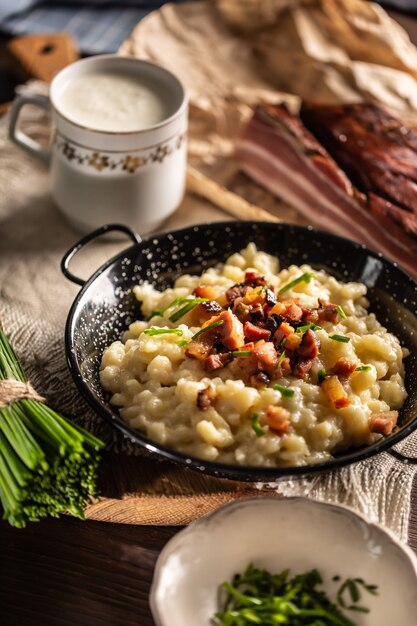 |
| Caesar Salad appetizer |
When I was growing up (I realize I say that a lot about food!), we had a leafy green salad on the dinner table almost every night. I notice now that my family has cut way back on such salads. We’ll sub a green vegetable, like asparagus or green beans, or the other night it was a marinated cucumber salad. We also really like main-dish salads—Big Mac salad, taco salad, Columbia Salad. I have mixed feelings about this because I think there’s a real place on the table for a salad that highlights lettuce and dressing, maybe with a bit of bleu cheese, avocado, tomato, but the focus is on greens and the dressing.
According to internet wisdom,
whatever that is, home cooks should be familiar with two classic dressings:
Julia Child’s Sauce Vinaigrette and the original Caesar from Cesar Cardini.
Ladies first.
Julia Child's Sauce
Vinaigrette
2 tablespoons wine vinegar or a
combination of vinegar and lemon juice
1/4 teaspoon dry mustard
1/8 teaspoon salt
6 tablespoons extra-virgin olive oil and/or salad
oil, such as grapeseed oil
1 1/2 teaspoons minced shallot or scallions and/or ¼
teaspoon dried herbs, such as tarragon or basil
Big pinch of freshly ground pepper
Directions
Combine
vinegar, mustard, and salt in a bowl; whisk until dissolved. Whisk in oil,
shallot (or scallions and/or herbs) and pepper. (Alternatively, combine
all ingredients in a screw-top jar; cover and shake vigorously for 30 seconds
to blend thoroughly.) Taste carefully and adjust seasoning as
desired.
Traditionally,
the oil/acid ratio in a salad is 3:1, so it’s of note that Child calls for 5:1.
Caesar
Salad
If you’re ever on a quiz show
and asked, “In what country was Caesar salad invented?” be sure to say Mexico.
The salad was a last-minute inspiration by Caesar Cardini at his restaurant in
Tijuana in 1924. Traditionally, it is tossed tableside. There is much controversy
today over the use of the raw egg yolks—I use them, figuring in the US the egg
has been pasteurized (mostly I wish they weren’t but this is an exception) and
the vinegar will “cook” it. You do you.
Ingredients
2 egg yolks
¾ cup extra virgin olive oil
4 anchovies, chopped
½ Tbsp. Dijon mustard
1 Tbsp. Worcestershire sauce
2 cloves garlic minced
1 Tbsp. fresh lemon juice
¾ cup freshly grated parmesan
¼ tsp salt
½ tsp black pepper
Directions
Whisk two egg yolks in a bowl until creamy (about two minutes). Add the olive oil and whisk until well combined. Stir in the anchovies, Worcestershire sauce, Dijon mustard, and lemon juice until completely combined. Add salt, pepper, and parmesan cheese. Serve with romaine lettuce (no other), croutons, and shaved parmesan cheese.
Some culinary experts claim the original Caesar was no tossed at all, but individual leaves were served, each tipped with a bit of the dressing. I have had it served that way in restaurants. It makes good finger food. We experimented with it as an appetizer (photo above).
Wilted lettuce
Let me add one more that I think should be classic,
especially if you can get spring lettuce freshly pulled from the ground.
Ingredients
6 strips bacon, diced and fried – reserve the grease
2 Tbsp. vinegar
4 cups leaf lettuce
Some people add mustard, brown sugar, onions, radishes,
etc. but this is the way my mom did it, and I prefer.
Fry the diced bacon until crisp.
Remove from skillet to drain on paper towel. Meanwhile tear four cups lettuce
into your salad bowl. Pour warm bacon grease over lettuce (if you need to heat
it a bit, do so—it must be warm). Splash vinegar over salad and toss until
every leaf is coated. Taste for seasoning—adding salt, pepper or sugar, more
vinegar or more oil, is up to you.






